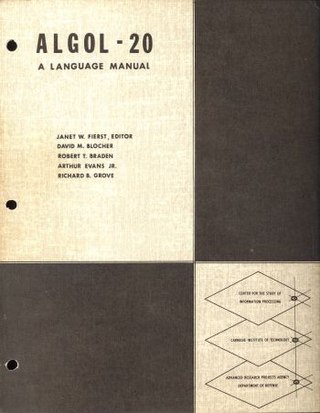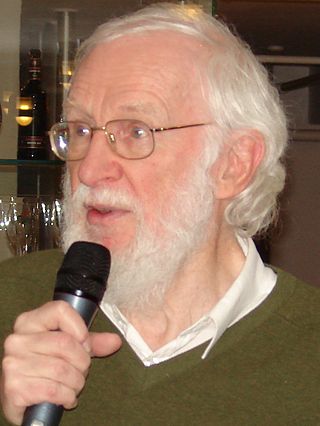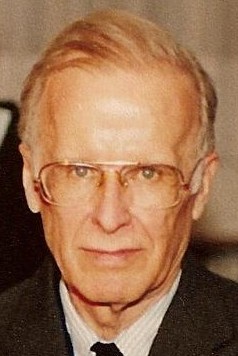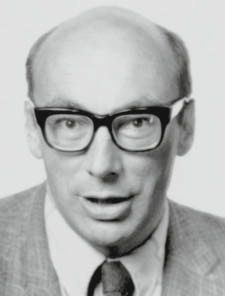Related Research Articles

ALGOL is a family of imperative computer programming languages originally developed in 1958. ALGOL heavily influenced many other languages and was the standard method for algorithm description used by the Association for Computing Machinery (ACM) in textbooks and academic sources for more than thirty years.
Atlas Autocode (AA) is a programming language developed around 1963 at the University of Manchester. A variant of the language ALGOL, it was developed by Tony Brooker and Derrick Morris for the Atlas computer. The initial AA and AB compilers were written by Jeff Rohl and Tony Brooker using the Brooker-Morris Compiler-compiler, with a later hand-coded non-CC implementation (ABC) by Jeff Rohl.
In computing, a compiler is a computer program that translates computer code written in one programming language into another language. The name "compiler" is primarily used for programs that translate source code from a high-level programming language to a low-level programming language to create an executable program.

Simula is the name of two simulation programming languages, Simula I and Simula 67, developed in the 1960s at the Norwegian Computing Center in Oslo, by Ole-Johan Dahl and Kristen Nygaard. Syntactically, it is an approximate superset of ALGOL 60, and was also influenced by the design of Simscript.

Peter Naur was a Danish computer science pioneer and Turing award winner. He is best remembered as a contributor, with John Backus, to the Backus–Naur form (BNF) notation used in describing the syntax for most programming languages. He also contributed to creating the language ALGOL 60.
Backus-Naur form (BNF) is a notation used to describe the syntax of programming languages or other formal languages. It was developed by John Backus and Peter Naur. BNF can be described as a metasyntax notation for context-free grammars.
In computer science, a compiler-compiler or compiler generator is a programming tool that creates a parser, interpreter, or compiler from some form of formal description of a programming language and machine.

John Warner Backus was an American computer scientist. He directed the team that invented and implemented FORTRAN, the first widely used high-level programming language, and was the inventor of the Backus–Naur form (BNF), a widely used notation to define syntaxes of formal languages. He later did research into the function-level programming paradigm, presenting his findings in his influential 1977 Turing Award lecture "Can Programming Be Liberated from the von Neumann Style?"
In computer science, a high-level programming language is a programming language with strong abstraction from the details of the computer. In contrast to low-level programming languages, it may use natural language elements, be easier to use, or may automate significant areas of computing systems, making the process of developing a program simpler and more understandable than when using a lower-level language. The amount of abstraction provided defines how "high-level" a programming language is.
ALGOL W is a programming language. It is based on a proposal for ALGOL X by Niklaus Wirth and Tony Hoare as a successor to ALGOL 60. ALGOL W is a relatively simple upgrade of the original ALGOL 60, adding string, bitstring, complex number and reference to record data types and call-by-result passing of parameters, introducing the while statement, replacing switch with the case statement, and generally tightening up the language.
In computer programming, a block or code block or block of code is a lexical structure of source code which is grouped together. Blocks consist of one or more declarations and statements. A programming language that permits the creation of blocks, including blocks nested within other blocks, is called a block-structured programming language. Blocks are fundamental to structured programming, where control structures are formed from blocks.

Peter John Landin was a British computer scientist. He was one of the first to realise that the lambda calculus could be used to model a programming language, an insight that is essential to the development of both functional programming and denotational semantics.

The history of programming languages spans from documentation of early mechanical computers to modern tools for software development. Early programming languages were highly specialized, relying on mathematical notation and similarly obscure syntax. Throughout the 20th century, research in compiler theory led to the creation of high-level programming languages, which use a more accessible syntax to communicate instructions.
ALGOL 58, originally named IAL, is one of the family of ALGOL computer programming languages. It was an early compromise design soon superseded by ALGOL 60. According to John Backus
The Zurich ACM-GAMM Conference had two principal motives in proposing the IAL: (a) To provide a means of communicating numerical methods and other procedures between people, and (b) To provide a means of realizing a stated process on a variety of machines...
The man or boy test was proposed by computer scientist Donald Knuth as a means of evaluating implementations of the ALGOL 60 programming language. The aim of the test was to distinguish compilers that correctly implemented "recursion and non-local references" from those that did not.
There are quite a few ALGOL60 translators in existence which have been designed to handle recursion and non-local references properly, and I thought perhaps a little test-program may be of value. Hence I have written the following simple routine, which may separate the man-compilers from the boy-compilers.
The TPK algorithm is a simple program introduced by Donald Knuth and Luis Trabb Pardo to illustrate the evolution of computer programming languages. In their 1977 work "The Early Development of Programming Languages", Trabb Pardo and Knuth introduced a small program that involved arrays, indexing, mathematical functions, subroutines, I/O, conditionals and iteration. They then wrote implementations of the algorithm in several early programming languages to show how such concepts were expressed.
Jensen's device is a computer programming technique that exploits call by name. It was devised by Danish computer scientist Jørn Jensen, who worked with Peter Naur at Regnecentralen. They worked on the GIER ALGOL compiler, one of the earliest correct implementations of ALGOL 60. ALGOL 60 used call by name. During his Turing Award speech, Naur mentions his work with Jensen on GIER ALGOL.

In computing, a compiler is a computer program that transforms source code written in a programming language or computer language, into another computer language. The most common reason for transforming source code is to create an executable program.
DG/L is a programming language developed by Data General Corp for the Nova, Eclipse, and Eclipse/MV families of minicomputers in the 1970s and early 1980s.
References
- ↑ Knuth, Donald E. (December 1964). "Backus normal Form vs Backus Naur Form". Communications of the ACM. 7 (12): 735–6. doi: 10.1145/355588.365140 . S2CID 47537431.
- ↑ ACM Award Citation / Peter Naur, 2005
- ↑ van Emden, Maarten (2014). "How recursion got into programming: a tale of intrigue, betrayal, and advanced programming-language semantics". A Programmer's Place.
- ↑ Hoare, C.A.R. (December 1973). "Hints on Programming Language Design" (PDF). p. 27. (This statement is sometimes erroneously attributed to Edsger W. Dijkstra, also involved in implementing the first ALGOL 60 compiler.)
- ↑ Abelson, Hal; Dybvig, R. K.; et al. Rees, Jonathan; Clinger, William (eds.). "Revised(3) Report on the Algorithmic Language Scheme (Dedicated to the Memory of ALGOL 60)" . Retrieved 2009-10-20.
- ↑ The Encyclopedia of Computer Languages Archived September 27, 2011, at the Wayback Machine
- ↑ Daylight, E. G. (2011). "Dijkstra's Rallying Cry for Generalization: the Advent of the Recursive Procedure, late 1950s – early 1960s". The Computer Journal . 54 (11): 1756–1772. doi:10.1093/comjnl/bxr002.
- ↑ Kruseman Aretz, F.E.J. (30 June 2003). "The Dijkstra-Zonneveld ALGOL 60 compiler for the Electrologica X1" (PDF). Software Engineering. History of Computer Science. Amsterdam: Centrum Wiskunde & Informatica.[ permanent dead link ]
- ↑ Irons, Edgar T., A syntax directed compiler for ALGOL 60, Communications of the ACM, Vol. 4, p. 51. (Jan. 1961)
- ↑ Kurtz, Thomas E. (1978). "BASIC". History of programming languages. pp. 515–537. doi:10.1145/800025.1198404. ISBN 0127450408.
- ↑ Gries, D.; Paul, M.; Wiehle, H. R (1965). "Some techniques used in the ALCOR Illinois 7090". Communications of the ACM. 8 (8): 496–500. doi: 10.1145/365474.365511 . S2CID 18365024.
- ↑ Bayer, R.; Gries, D.; Paul, M.; Wiehle, H. R. (1967). "The ALCOR Illinois 7090/7094 post mortem dump". Communications of the ACM. 10 (12): 804–808. doi: 10.1145/363848.363866 . S2CID 3783605.
- ↑ Rechenautomaten mit Trommelspeicher, Förderverein der Technischen Sammlung Dresden
- ↑ Mounier-Kuhn, Pierre (2014). "Algol in France: From Universal Project to Embedded Culture". IEEE Annals of the History of Computing. 36 (4): 6. ISSN 1058-6180.
- ↑ Kurtz, op. cit., page 517.
- ↑ Boussard, Jean-Claude (June 1964). Design and implementation of a compiler Algol60 on electronic calculator IBM 7090/94 and 7040/44 (phdthesis). Institut d'informatique et mathématiques appliquées de Grenoble : Université Joseph-Fourier - Grenoble I.
{{cite thesis}}: CS1 maint: location (link) - ↑ Claude Pair (27 April 1965). Description d'un compilateur ALGOL. European Région 1620 Users Group. IBM.
- ↑ Kruseman Aretz, F.E.J. (1973). An Algol 60 compiler in Algol 60. Mathematical Centre Tracts. Amsterdam: Mathematisch Centrum.
- ↑ Aho, Alfred V.; Sethi, Ravi; Ullman, Jeffrey D. (1986). Compilers: Principles, Techniques, and Tools (1st ed.). Addison-Wesley. ISBN 978-0-201-10194-2., Section 7.5, and references therein
- ↑ "803 ALGOL", the manual for Elliott 803 ALGOL
- ↑ "The ALGOL Programming Language". www.engin.umd.umich.edu. Archived from the original on 10 February 2010. Retrieved 11 January 2022.
- ↑ "Hello world! Example Program". www.engin.umd.umich.edu. Archived from the original on 4 February 2010. Retrieved 11 January 2022.
- ↑ Fortran#"Hello, World!" example
- ↑ "ICL 1900 series: Algol Language". ICL Technical Publication 3340. 1965.